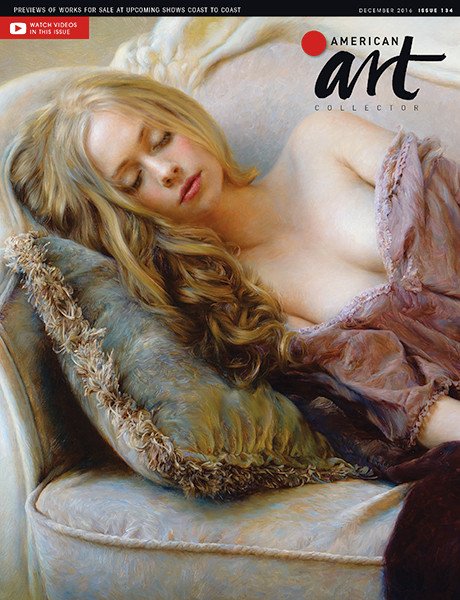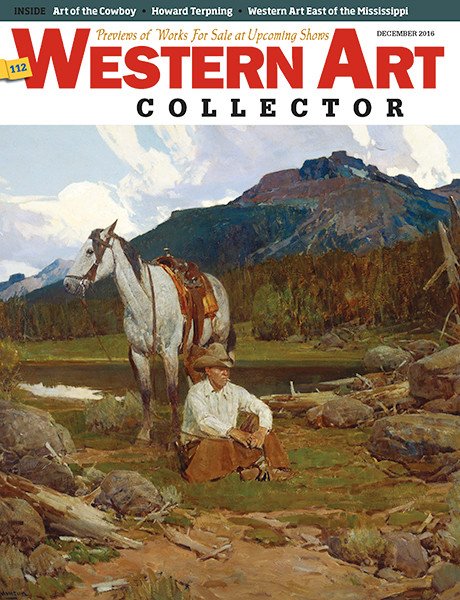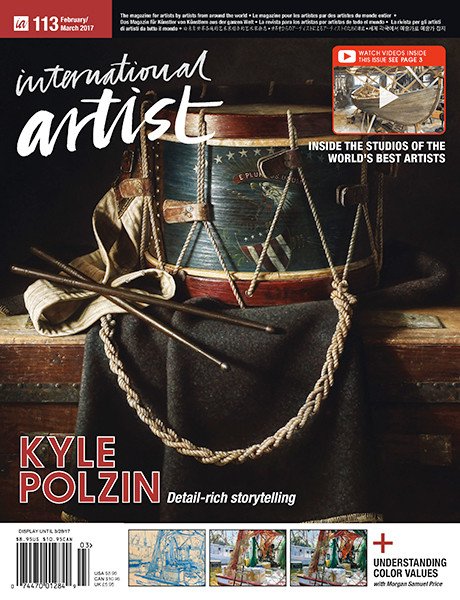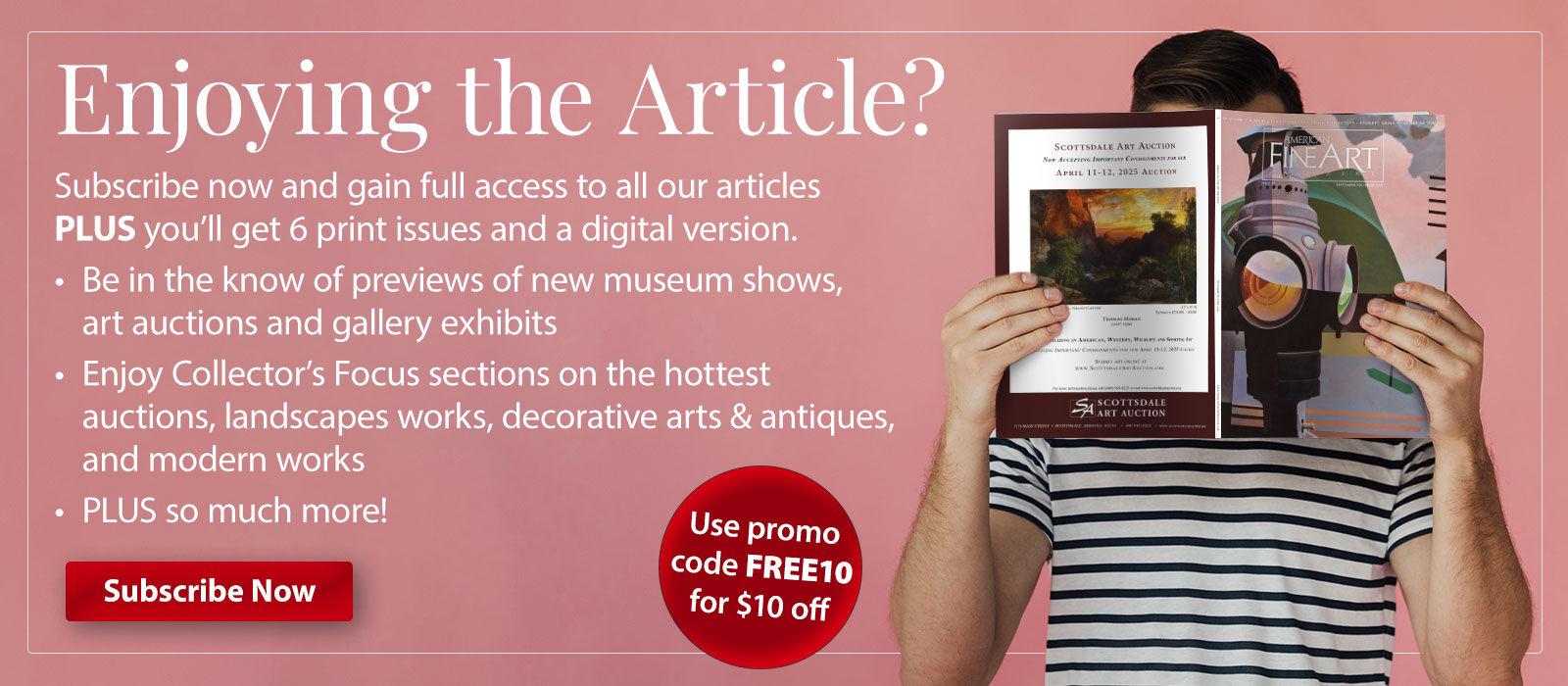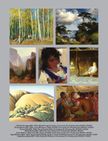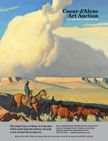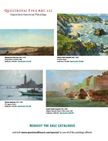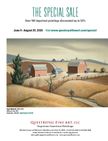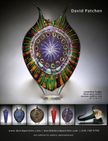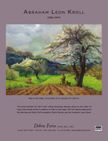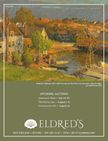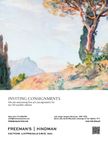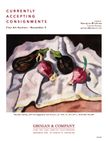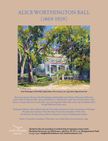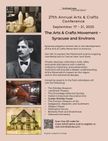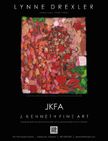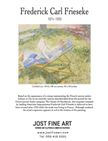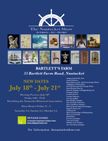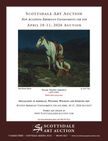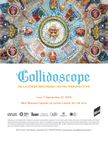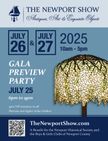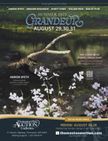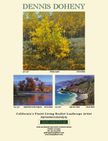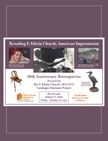When an artist’s work is elusive, when it doesn’t fit the received wisdom of art history, two things can happen. One, the artist is ignored. I’d love to give you examples, but I can’t. Ignored here means unknown, and unknown comprises the greatest part of the current of the arts that runs through history. I’m not talking about “Anonymous.” Plenty of artworks by Anonymous are part and parcel of the vernacular of human culture. I said “two things can happen.” The second is that the artist was known, and may have even had a career, a reputation, enjoyed fame. In this instance, the artist’s elusiveness isn’t in the life of the artist; it’s in the work. When this is true—and it is true in the truest sense of true when it comes to the art of Gertrude Abercrombie—the artist is rediscovered, time and again, defined and redefined, claimed and reclaimed. In these cases, the art world, like the proverbial goldfish whose memory is so short that every time it sees the little porcelain bridge in its bowl, it exclaims, “O, look, a bridge!”

Gertrude Abercombie (1909-1977), Charlie Parker’s Favorite Painting, 1946. Oil on Masonite, 1715⁄16 x 217/8 in. Ackland Art Museum, The University of North Carolina at Chapel Hill. Gift of the Gertrude Abercrombie Trust.
Want an example? Frida Kahlo. Here’s the kicker: with Kahlo and Abercrombie, their biographies are quite open and available. In fact, you might say that Gertrude Abercrombie is, or is soon to be, the American Frida Kahlo.
If you read the excellent essays in the catalogue for Gertrude Abercrombie: The Whole World is a Mystery, a comprehensive exhibition that opens at Colby College Museum of Art on July 12, you can see that Abercrombie hid nothing of her beliefs, attitudes, mores, values—nothing. And yet, because the work is elusive, that is, because it seems to be masking something hidden in the life, we delve into the art armed with whatever we imagine we have of the language of psychotherapy and the detective novel. We want the art to reveal those aspects of the artist’s life that the artist has hidden, whether consciously or unconsciously. We scour the work for clues. This is all us. To use what little I have of the discourse of analysis, all of this amounts to projections of our desires.

Gertrude Abercombie (1909-1977), Strange Shadows (Shadow and Substance), 1950. Oil on canvas, 22 x 36 in. Private Collection, Illinois. Photo: Michael Tropea.

Gertrude Abercombie (1909-1977), The Church, 1938. Oil on canvas, 18 x 24 in. Crystal Bridges Museum of American Art, Bentonville, Arkansas. Photo: Edward C. Robison III.
Surrealist, Feminist, Magical Realist, Queer Ally, Super-Realist, Midwestern Modernist, Black Ally, Outsider Artist, Bop Improvisationist, Oneiric Realist… I end that list with an ellipsis because it will surely grow. No period is possible. All of those labels are correct in the sense that you can make a strong case for them; none of those labels really gets its arms around Abercrombie’s paintings.
Gertrude Abercrombie (1909-1977) was born in Texas to a pair of itinerant opera singers who eventually settled in the Hyde Park neighborhood of Chicago. She “took every available art class” at the University of Illinois and at the American Academy of Art. She became a successful commercial artist and, at the same time, began to exhibit her work alongside many of the Windy City’s leading modernists. Critics lauded her from the start. Through her friendship with playwright Thornton Wilder (Our Town, The Skin of Our Teeth) Abercrombie met one of her heroes, another Gertrude—Gertrude Stein—who admonished her to “not be sloppy” in her painting. Abercrombie took this to heart. When she became a WPA artist during the Depression, she was able to use the government stipend to develop her personal style—including the creation of a symbolic lexicon all her own—and meet other artists. She has a daughter, Dinah, with her first husband, though Abercrombie, by all accounts, takes no interest in the traditional wife/mother persona. In 1944, the family moves into a rambling Victorian house in Hyde Park that will become her home and home base, for the remainder of her life. Because she was also an outstanding pianist who loved jazz, Abercrombie haunted Chicago’s South Side clubs and befriended some of the finest musicians in history. Among them were Charlie Parker, Sonny Rollins, Clifford Brown, Dizzy Gillespie, Charles Mingus and Thad Jones. They often stayed with her in Hyde Park when they were in town. Abercrombie’s parties became the stuff of legend. Her many LGBTQ friends, fellow artists like Karl Priebe, her best friend; Dudley Huppler; and many others, added to the guest list, a veritable who’s who of writers, artists, musicians and actors.

Gertrude Abercombie (1909-1977), Levitation, 1967. Oil on Masonite, 8 x 10 in. Private Collection, Illinois. Photo: Michael Tropea.

Gertrude Abercombie (1909-1977), Letter from Karl, 1940. Oil on canvas, 24 x 30 in. Union League Club of Chicago.
As is the case with all such accidental, impromptu, serendipitous salons, no one, not even those who were there, can adequately pinpoint the results of the creative ferment that rose out of the conversations and improvisations at those parties.
In 1977, near the end of her life, Abercrombie did a fantastic interview—reproduced in full in the catalogue—with renowned writer Studs Terkel. It was the afternoon of a major retrospective and Terkel reminds the artist that Dizzy Gillespie “embraced Abercrombie as a fellow bopper [stating]: ‘I would like to make an unequivocal statement: Gertrude Abercrombie is the bop artist, bop in that she has taken the essence of our music and transported it into another form of art.’” Abercrombie responds to Terkel in the following way, “I invented the term ‘bop’ for my art… I think they’re called bop paintings, yes, because they’re a little off, not color but off, kind of off the beam, they’re kind of goofy. I feel that they’re like the bop music.” In the 1940s Bop, or BeBop, took jazz from the Big Band dance floor to philharmonic halls from coast to coast.

Gertrude Abercombie (1909-1977), A Picture in a Picture in a Picture, 1955. Oil on Masonite, 8 x 10 in. Private Collection. Courtesy of Sullivan Goss Gallery.

Gertrude Abercombie (1909-1977), Self-Portrait Brooch, 1954. Oil on board, set in wire mount, 1 x 1 in. Illinois State Museum, Gift of the Gertrude Abercrombie Trust.
Like Kahlo, Abercrombie repeats elements from canvas to canvas. I am tempted to refer to them in the singular—the blasted tree, the cat, the moon, but there are also doors, ladders, flying saucer-shaped clouds, giraffes, shells, all of them elusive in terms of meaning. In linguistics, we would say that they are signifiers without specific signification. Then, also like Kahlo, there are self-portraits in all sorts of guises. Taking it further, Abercrombie paints her paintings on the walls in interior moments. A small 1955 oil, A Picture in a Picture in a Picture, takes this to an extreme, though Abercrombie herself said this practice was inspired by the infinite regression on a Quaker Oats cereal box—which places her alongside, say Stuart Davis, as a proto-Pop Art, finding artistic inspiration in commercial imagery. What we’re talking about here, of course, is repetition, variation, and improvisation, the three cornerstones of modern jazz.

Gertrude Abercombie (1909-1977), Birds Eggs and Dominoes with Pyramid, 1963. Oil on Masonite, 8 x 10 in. Private Collection. Courtesy of Freeman’s | Hindman.

Gertrude Abercombie (1909-1977), Four Shells, 1952. Oil on Masonite, 51/8 x 7 in. Courtesy of Ortuzar Projects.
A 1946 painting, titled after the great jazz saxophonist Charlie “Bird” Parker, Charlie Parker’s Favorite Painting is perhaps as close as Abercrombie gets to what might be termed representational symbolism—there’s another possible “name” for her: representational symbolist. My contribution. Add that to the list. Referencing Billie Holiday’s classic song, “Strange Fruit,” in which the “fruit” are the hanging bodies of lynched Black Americans, Abercrombie’s tree serves as a hanging tree while her ladder serves as the means by which the body would have been removed. The box, of course, would have been the last thing the scourged and condemned person stood on. The moon, open-eyed, sits silent, as does a single black cloud. Both look on in helpless judgement. These signifiers are signifying all over the place. We might say they are witnessing.
Even a small, seemingly simple work such as Four Shells, a 5-by-7 oil, painted in 1952, forces us to flit from meaning to meaning: the shells are eyes; the shells are breasts; the shells are long-necked creatures—dinosaurs, perhaps, whose heads are just above the surface of something—water, earth; the shells are what they are, snail shells, and the snails are racing, no, migrating, no, consulting. That long line bisecting the painting horizontally? You see that in almost all of her paintings. Is it, as John Corbett suggests in his catalogue essay, “Seven Miniatures,” the horizon Abercrombie would have seen every day, Lake Michigan? Are the shells, then, just floating? I look to that flying saucer cloud in the sky, hiding the moon, but it doesn’t answer. It doesn’t even blink.

Gertrude Abercombie (1909-1977), Tree, Table, and Cat, 1937. Oil on canvas, 40 x 30 in. Private Collection, Illinois. Photo: Michael Tropea.

Gertrude Abercombie (1909-1977), Demolition Doors, 1964. Oil on Masonite, 20 x 24 in. Illinois State Museum; Purchase.
As Sarah Humphreville writes in her essay, Abercrombie “cultivated her weirdness…” Her work insists that we cultivate ours. For me, it’s the discomfort, not of the elements in her paintings, but in the spaces between those elements. They are hauntingly empty, reminiscent of French photographer Eugene Atget’s images of circuses and carnivals at night or early in the morning. When I look at paintings like Levitation, 1967 and Strange Shadows (Shadow and Substance), 1950, I think of Ray Bradbury’s stories, especially his incredible 1962 novel, Something Wicked This Way Comes and that October when Mr. Dark’s carnival comes to town. It is as if everything in those paintings is waiting, waiting for an audience to move them from loose correlation to cohesion. For now, however, they move in a void of voids, incomplete shadows detached from substance, ghosts of themselves. And the doors in Abercrombie’s paintings become choices leading to roads not yet taken, or shut behind us, or closed to us forever, a funhouse of mirrors of selves we might wish we had become or selves we wish we had never entertained.

Gertrude Abercombie (1909-1977), Search for Rest (Nile River), 1951. Oil on Masonite, 24 x 36 in. Collection of Sandra and Bram Dijkstra.
What we want—or think we want—is for our iconoclasts to become icons, that is, to become portraits or symbols or metaphors of a fixed idea or constellation of ideas. We want a place for them, and we want to put them in that place. It’s an incredibly human impulse to want this. We want this for ourselves, too. But since Gertrude Abercrombie was—and is—herself a “whole world”—as are we all—and since the whole world is a mystery, may she and her paintings continue to “clast” icons. May they never be iconic. May their mystery ever perpetuate and ever elude us. —
James D. Balestrieri writes regularly on the arts. His book, Clark Hulings and the Art of Work, was just published by Cambridge Scholars.
July 12-January 11, 2026
Gertrude Abercrombie: The Whole World Is a Mystery
Colby College Museum of Art
5600 Mayflower Hill Drive
Waterville, ME 04901
t: (207) 859-5600, museum.colby.edu
Powered by Froala Editor
